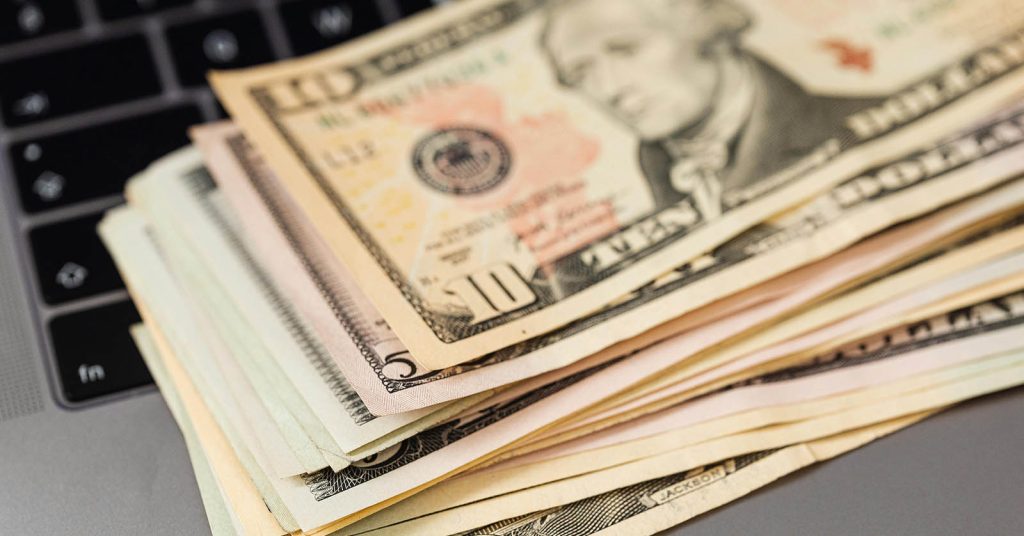You don’t need a pile of cash to build a real online business in 2025. You need a niche you understand, a simple way to deliver value on day one, and a plan to attract your first customers without buying ads. This guide shows exactly how to do that, step by step, using free tools and “no-inventory” models like services, affiliate content, print-on-demand, and “sell before you build” digital products. We’ll keep things beginner-friendly but go deep enough for advanced readers who want to validate demand, structure a lean operation, and avoid legal mistakes. You’ll learn where to find your first customers without paying for traffic, the cheapest way to accept payments, how to test offers in a weekend, and when to formalize the business with an EIN or LLC. We’ll also cover platform realities for 2025: YouTube’s expanded Partner Program thresholds, TikTok Shop’s referral fees, Instagram monetization basics, and marketplace fees you should understand before you list. Finally, you’ll get a punchy checklist, examples you can copy, and a 30-day launch sprint that leaves you with proof of concept instead of a half-finished website. If you want the shortest path to your first $1 online — without paid ads — start with the service model below, then stack one scalable model once you have traction.
Key Takeaways
- Start with services, because you can sell time and skills today with no inventory, no ads, and no software spend.
- Use “sell before you build” for digital products: validate the outline with a pre-order or waitlist before you create the full thing.
- Leverage free distribution, like YouTube Shorts, Reels, and Threads; the expanded YouTube Partner Program has accessible entry thresholds for smaller creators in 2025.
- Mind platform fees & policies (TikTok Shop referral fee, Etsy listing/ads rules, marketplace policies) to protect thin margins.
- Stay compliant: EINs are free from the IRS, and you must disclose paid endorsements/affiliates under the FTC’s updated Guides.
Step 1 — Choose a No-Money Model You Can Execute This Week
If you need results fast and have no budget, start with a service that uses skills you already have, then bolt on a scalable model once you’ve got cash flow. Services are ideal because you can deliver value with your brain, a laptop, and free tools. Good fits include editing, design, basic analytics/reporting, SEO quick wins, UGC creation, short-form video editing, email setup, or simple no-code automations. Your first offer should be specific, time-boxed, and outcomes-oriented so a stranger can say “yes” without a Zoom call — think “One-Page Landing Revamp in 48h,” “Reels Pack: 8 Clips in 7 Days,” or “Etsy Listing Overhaul (5 listings + SEO).” Once you’ve shipped work and gathered three testimonials, layer in a scalable model such as affiliate content (reviews, tutorials, comparison posts), print-on-demand (tees, mugs, posters — no inventory), dropship test for a single-product store, or digital products like templates and micro-courses. If you have an audience, add low-friction monetization — YouTube Shorts, channel memberships later, Instagram subscriptions where eligible, or TikTok Shop if you sell physical goods with platform checkout. For creators, the key in 2025 is to use platforms’ built-in monetization earlier rather than waiting for huge followings; YouTube now lets smaller channels apply when they meet updated thresholds (see Sources), which makes “content as acquisition” viable much sooner than before. For product models, pick exactly one channel to master for 30 days, then expand only if you can keep shipping consistently; spreading too thin kills early momentum more than any lack of tools or budget.
Step 2 — Validate Demand in 48 Hours (Zero Ad Spend)
Validation is a simple promise: prove that strangers will act before you invest weeks of work. Start by writing a one-paragraph offer that names the audience, the painful problem, the specific outcome, and the timeframe. Turn it into a one-page landing or a pinned social post with a single call to action (book link, checkout link, or waitlist). Then push that message where your audience already hangs out: niche subreddits, Discords, Facebook Groups, LinkedIn search with smart filters, YouTube comments on related videos, or Threads using custom feeds to find topical conversations. On social, publish three helpful micro-posts that teach something specific, each ending with a clear invitation to your offer. For content plays, record a 45-second explainer video that answers one “how do I” question and link to a simple Google Form or free checkout page. If you’re physical-goods focused, consider TikTok Shop only after you have a product that’s already requested organically; understand the referral fee and FBT/storage rules first. Keep your scorecard ruthless: ten real conversations, five qualified leads, two paid trials in 48 hours is a green light; if you strike out, refine the promise and try again. Remember: a pre-order at a small discount is stronger validation than likes or sign-ups because it tests whether people will trade money for your solution.
Step 3 — Set Up the Minimum Viable Back Office (Free)
Keep your setup light until you have sales. For taxes and payments, you can operate as a sole proprietor and accept payments via common processors; if you need a business bank account or want to hire contractors, get a free EIN directly from the IRS online (ignore sites that charge). Use a free landing page tool or a basic CMS with a no-cost theme to publish your offer and an embedded checkout. For invoicing, start with a simple template and a dedicated email. Track every expense and every dollar received in a single spreadsheet: date, amount, source, product, and note. For creators, enable platform monetization when eligible rather than waiting — YouTube’s expanded Partner Program now lets smaller channels apply once they meet the 500-subscriber threshold plus either watch-hour or Shorts-views requirements; this can help you cover basic costs while you grow. If you sell physical goods via TikTok Shop or marketplaces, read the fee pages so you know what gets deducted; thin margins die on fees you “assumed” were lower. For social selling and paid partnerships, follow the FTC’s updated Endorsement Guides, which require clear disclosures when you’re paid, receive free products, or use affiliate links; write the disclosure so even skimmers can’t miss it. As soon as revenue is consistent, create a simple money routine: weekly bookkeeping, monthly tax set-aside, and quarterly review of prices and scope creep. When you’re processing more volume, talk to a tax pro about sales-tax thresholds for your state and marketplace facilitator rules if platforms collect/remit on your behalf.
Step 4 — Pick Your First Growth Channel (and the 30-Day Plan)
Choose one channel to master for 30 days so you can publish consistently and measure real signals. If you like video, use YouTube Shorts plus long-form weekly content and enable monetization as soon as you hit the updated eligibility thresholds; this makes “content as acquisition” sustainable because a small share of revenue arrives while you build. If you prefer social commerce, test Reels + Instagram collaborations to earn your first partnership or route traffic to your own checkout; later, consider Instagram Subscriptions if your account meets criteria, but focus on value before perks. If you’re product-led, TikTok Shop can be powerful if you respect the fee math and test one SKU that gets organic demand in your niche. If you’re craft-led, Etsy gets you buyers on day one, but read the fine print on listing fees and Offsite Ads so you’re not surprised. Regardless of channel, keep publishing cadence simple: three tiny lessons per week, one case study or customer story, and one call-to-action post. Avoid vanity metrics; track only three things — output (posts/week), conversations (DMs/comments), and revenue (orders/sales). If you don’t see movement after 30 days, adjust the offer or switch channels; your creative energy is your only “capital,” so spend it where the feedback loop is fast and the audience is already primed to take action.
Money Models That Work With $0 Upfront (Pros, Cons, and First Steps)
Services: fastest to revenue; sell a clear outcome in a defined time window. Start with a single “productized” service so you can say a price confidently; document your workflow, then raise rates after three happy clients. Affiliate/Content: create reviews, tutorials, and comparisons that answer buyer questions; disclose affiliates clearly and publish on a fast, lightweight site plus YouTube Shorts to seed traffic. Digital Products: test with a one-page outline and a pre-order; deliver a “v1” PDF or template within seven days, then iterate to v2 with customer feedback; a small, useful asset beats a giant course nobody finishes. Print-on-Demand: upload designs to a marketplace or storefront app that prints and ships per order; margins are thinner, but you carry no inventory; validate designs with audience polls before listing. Dropship (single-product test): risky if you rely on ads, but workable if the product solves a specific pain and customers already search for it; test one SKU, one channel, and a landing page focused on proof. Creator Monetization: mix free content that builds trust with platform monetization where you qualify; YouTube can pay earlier now that the Partner Program accepts smaller channels; Instagram and Threads offer discovery and collaboration opportunities that don’t require ad spend. Across models, the rule is the same: validate with strangers, deliver one tight offer really well, and upgrade your stack only when the current bottleneck is output — not tooling.
Avoid These 7 Common Pitfalls (Fees, Policies, and Scams)
First, don’t rely on “free trials” that become essential and then lock you into costs you didn’t budget; track recurring tools in a simple sheet and cancel ruthlessly. Second, watch marketplace and platform fees: Etsy charges $0.20 per listing plus separate advertising/transaction costs, and its Offsite Ads fees can reach 15% for lower-volume sellers; TikTok Shop in the U.S. raised most referral fees to 6% per order in 2024 and has separate FBT/storage fees if you use fulfillment. Third, do not pay anyone for an EIN — apply at IRS.gov for free, and be cautious of websites that mimic the IRS flow and charge “processing.” Fourth, if you publish affiliate content or accept free products, the FTC requires clear, conspicuous disclosures in line with its updated Endorsement Guides; don’t bury your disclosure in a footer. Fifth, don’t assume you “don’t need permission” to use music or trademarks; content strikes and takedowns waste time and momentum. Sixth, beware “business opportunity” schemes that promise guaranteed earnings — scrutinize refund policies and seek independent reviews; the FTC continues to target deceptive offers. Seventh, when monetization features open up on platforms, read eligibility pages and community guidelines; a single policy violation can disable a feature and choke your growth for weeks. If you keep your stack simple, your disclosures clear, and your scorecard focused on activity and revenue, you’ll avoid 90% of beginner headaches and build a business that compounds over time.
30-Day Zero-Budget Launch Plan (Copy This)
Days 1–3: pick a service or product idea and draft a one-paragraph offer; publish a one-page landing or pinned social post with one clear CTA.
Days 4–7: ship three micro-lessons and one short case study publicly, and DM ten people in your niche with a helpful observation and an invite to your offer; book two paid trials or collect ten waitlist emails for a digital product pre-order.
Days 8–14: deliver work for early customers and collect one-sentence testimonials plus permission to share results; turn deliverables into Shorts/Reels that teach one technique each; publish your “how I did it” thread on Threads to spark conversations.
Days 15–21: raise your price 20% if your pipeline is full; for digital, deliver v1 to pre-order buyers and schedule a feedback call; for print-on-demand, launch three designs and remove any that don’t get clicks.
Days 22–30: pick one monetization unlock to pursue — apply to the YouTube Partner Program if you’ve hit the eligibility numbers, or prepare a small Instagram subscription perk deck, or list your most requested SKU on TikTok Shop; end the month with a weekly money routine, a testimonial wall, and a single sentence that explains what you do and for whom.
At day 30, assess honestly: if the offer is resonating, double down; if not, refine the promise or pivot the channel without increasing your tool spend. Your goal for month two is simple: repeat the system and raise average order value by adding one helpful add-on, not by adding more complexity.
Sources
- YouTube Creators — Partner Program overview & thresholds (expanded eligibility)
- YouTube Help — Expanded YPP eligibility (500 subs + watch hours/Shorts views)
- TikTok Shop — Referral fee update (6% most categories, from Apr 1, 2024)
- Etsy Help — Fees & Taxes (incl. Offsite Ads fees)
- Etsy Legal — Fees & Payments Policy (listing fee $0.20)
- IRS — Get an EIN (free; beware third-party fee sites)
- IRS — About Form SS-4 (EIN application details)
- FTC — Endorsement Guides (updated June 2023): disclosures for affiliates & gifts
- FTC — Endorsement Guides FAQ: “clearly and conspicuously” explained
- Amazon Merch on Demand — Print-on-demand (no inventory)
- Meta — Monetization eligibility status (In-stream Ads, Stars, Subscriptions)









